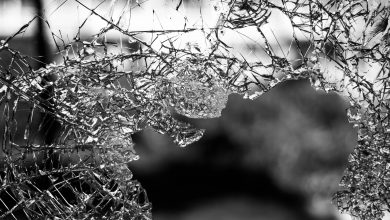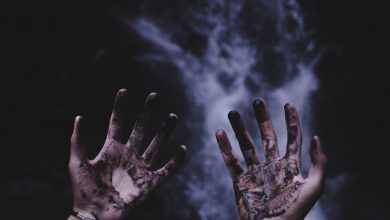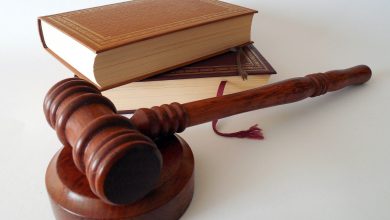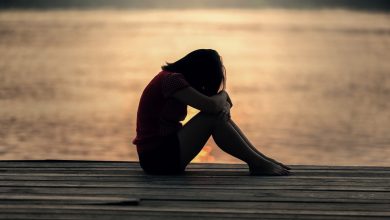Is Rioting a Felony? Famous Riots and the Insurrection Act of 1807
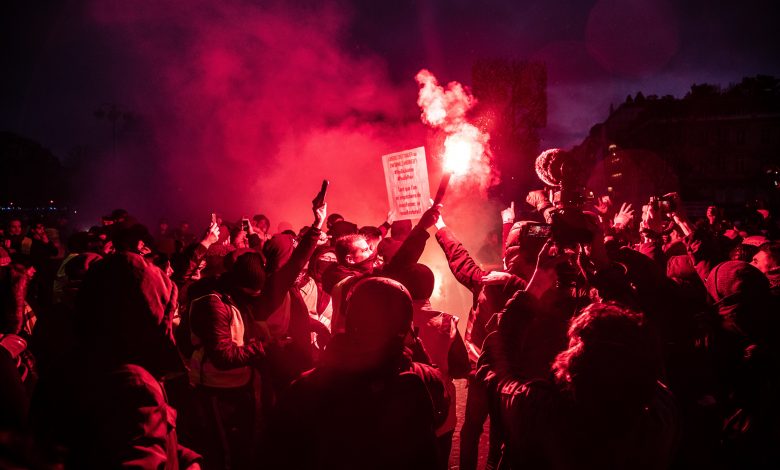
The right to protest is one of the oldest rights bestowed on Americans. However, when a peaceful protest turns violent, it becomes defined as a riot. There are laws in place that make both inciting a riot and rioting illegal. But is rioting a felony? This article will look at how rioting can become a felony and go in-depth on the Insurrection Act of 1807, which can be used by the President when rioting gets out of control.
Each state has its own laws governing both rioting and inciting a riot. If a person travels across state lines or enters the country and then proceeds to riot, that person has committed a federal offense. United States Federal Code states the following concerning this type of crime:
“(a) Whoever travels in interstate or foreign commerce or uses any facility of interstate or foreign commerce, including, but not limited to, the mail, telegraph, telephone, radio, or television, with intent—
- To incite a riot; or
- To organize, promote, encourage, participate in, or carry on a riot; or
- To commit any act of violence in furtherance of a riot; or
- To commit any act of violence in furtherance of a riot; or
- To aid or abet any person in inciting or participating in or carrying on a riot or committing any act of violence in furtherance of a riot;
And who either during the course of any such travel or use or thereafter performs or attempts to perform any other overt act for any purpose specified in subparagraph (a), (b), (c), or (d) of this paragraph –
Shall be fined under this title, or imprisoned not more than five years, or both.”
What Is a Riot?
A riot is defined as a crowd violently disturbing the peace. Legally, a riot could be either the previously mentioned violent public disturbance, or it could merely be the threat of an act of violence. A crowd is legally defined as an assemblage of three or more people that individually or collectively can carry out the threat of violence.
The legal definition of inciting a riot can be organizing, encouraging, or participating in a riot. The incitement of a riot can also be oral or written, according to 18 U.S. Code §?2102.
In California, for example, to be charged with inciting a riot, the riot does not necessarily need to take place. The act of trying to incite a riot is all that is necessary to be guilty. However, there is a stipulation that the circumstances must produce “clear and present and immediate danger” for charges to occur.
Defenses for Incitement to Riot
Due to the chaotic nature of riots, false arrests can happen at a higher than average rate. Successful defense strategies for an incitement to riot charge include:
- The defendant was present but was not the person who urged the crowd to commit violence.
- The defendant urged the crowd to continue protesting but not to commit violence.
- Assuming there was incitement to riot on the part of the defendant, it was unlikely for a riot to occur.
- The police exaggerated the events of the protest because they were angry and biased against them.
Using a procedure called a Pitchess motion, a defendant can request to see the personnel file of a law enforcement officer. If misconduct is found, it can be easier for a lawyer to defend against an incitement to riot charge.
What Is the Penalty for Rioting or Incitement to Riot?
If you are charged with rioting or incitement to riot, the charge can vary from as low as a fine to as high as a fine and a five-year prison sentence in most states. This charge can range much higher, though, depending on where the action occurs. In Michigan, for example, incitement to riot is punishable by ten years in jail.
In addition, often a charge of rioting or incitement to riot is accompanied by a secondary charge – for example, destruction of property. In many states, the destruction of property is a felony punishable by five years in prison.

Insurrection Act of 1807
The Insurrection Act of 1807 was initially enacted to replace the Calling Forth Act of 1792, which contained similar language. In 1871, a supplement to the Act called the Third Enforcement Act was passed. This Act added a section in which the military could be called up to protect African Americans from an attack by the Ku Klux Klan.
On Monday, June 1 of 2020, President Donald Trump threatened to use this Act in response to mass rioting across the country. In a statement, President Trump said the following:
“If a city or state refuses to take the actions that are necessary to defend the life and property of their residents, then I will deploy the United States military and quickly solve the problem for them.”
The original text of the Insurrection Act of 1807 reads:
“Be it enacted by the Senate and House of Representatives…in all cases of insurrection, or obstruction to the laws…it is lawful for the president of the United States to call forth the militia for the purpose of suppressing such insurrection, or of causing the laws to be duly executed, it shall be lawful for him to employ, for the same purposes, such part of the land or naval force of the United States…”
Before executing this power, the President must first order a proclamation for the insurgents to disperse immediately. In the absence of that disbursement, the President has the right to call in the military.
The Insurrection Act has been used 19 times in the 200+ years since it was put in place. Lyndon B. Johnson used the Act more than any other president, using it four times total. Three instances were in a span of three days starting April 5, 1968. The first instance was for riots in Washington, D.C., which were followed by riots in Chicago and the Baltimore riot of 1968. Prior to that, Johnson exercised this power on July 24, 1967, during a riot in Detroit.
Most recently, it was used By George H.W. Bush when the Los Angeles riots of 1992 were taking place. President Bush also had to use the Act following disorder in the Virgin Islands stemming from Hurricane Hugo in 1989.
Posse Comitatus Act
The Insurrection Act of 1807 is the one major exception to the Posse Comitatus Act, which limits the usage of the United States military inside the country.
What Is an Insurrection?
The definition of insurrection varies from the likely intended definition when the Act of 1807 was put into place. As defined in the Cambridge Dictionary, an insurrection is “an organized attempt by a group of people to defeat their government and take control of their country, usually by violence.”

Is Rioting Different than Disorderly Conduct?
Rioting is an advanced form of disorderly conduct. For example, in New Jersey, the law states in Code § 2C:33-2 regarding disorderly conduct:
“a. Improper behavior. A person is guilty of a petty disorderly person’s offense, if with purpose to cause public inconvenience, annoyance or alarm, or recklessly creating a risk thereof he (1) engages in fighting or threatening, or in violent or tumultuous behavior; or (2) creates a hazardous or physically dangerous condition by any act which serves no legitimate purpose of the actor.
b. Offensive language. A person is guilty of a petty disorderly person’s offense if, in a public place, and with purpose to offend the sensibilities of a hearer or in reckless disregard of the probability of so doing, he addresses unreasonably loud and offensively coarse or abusive language, given the circumstances of the person present and the setting of the utterance, to any person present.”
Regarding a riot, New Jersey law states in code § 2C:33-1:
“a. Riot. A person is guilty of riot if he participates with four or more others in a course of disorderly conduct as defined in section 2C:33-2a:
(1) With purpose to commit or facilitate the commission of a crime;
(2) With purpose to prevent or coerce official action; or
(3) When he or any other participant, known to him, uses or plans to use a firearm or other deadly weapon.”

Famous Riots in American History
The United States has an ugly history of riots, nearly every one of them related to racial tensions. The first of these riots began during World War II in the 1940s:
Zoot Suit Riots
During the Great Depression, going to dancehalls was one of the main ways for people to reduce their stress levels. Dancehalls were especially popular in Harlem, an uptown neighborhood of Manhattan, New York. The dancers at these clubs started wearing large, loose-fitting clothing, with wide lapels, padded shoulders, and baggy pants with tapered cuffs. The suits were adorned by watch chains and hats, and the total package became known as a “zoot suit.”
As the 1940s began, zoot suits started to become a popular clothing choice among African Americans and Mexican Americans in California. Affluent whites, though, viewed those wearing zoot suits as rebellious street thugs and gang members.
Wartime escalated the issue, as textiles began to be rationed. Despite the restrictions on textiles, bootleg tailors in California and New York continued to make the popular suits, which required a large amount of fabric. As the zoot suits continued to be worn, many viewed them as unpatriotic and a waste of valuable resources.
The media at the time had no problem escalating the tensions. The Los Angeles Times, for example, wrote the following on June 2, 1943:
“Fresh in the memory of Los Angeles is last year’s surge of gang violence that made the ‘zoot suit’ a badge of delinquency. Public indignation seethed as warfare among organized bands of marauders, prowling the streets at night, brought a wave of assaults, and finally murders.”
Tensions reached an all-time high later that summer among white Marines, sailors, and soldiers stationed in Los Angeles at the time. On May 31, 1943, a fight broke out between U.S. servicemen and Mexican American youths. The result was a U.S. sailor being beaten, and this incident became the spark that flamed the ensuing riots.
On the night of June 3, around 50 sailors marched through downtown Los Angeles armed with clubs and other weapons and proceeded to attack anyone with a zoot suit or similar identifying clothing. The following riots were among the ugliest in United States history.
Many more United States servicemen started attacking Latinos on the street and stripped them of their suits. The victims were left bloodied on the ground as local police officers watched. The police officers then proceeded to arrest the victims.
Thousands more joined the conflict, including civilians and off-duty police officers. The attacks moved from the streets to the insides of cafes and movie theaters. Anyone wearing a zoot suit or Latino-styled haircut became a potential victim. Blacks and Filipinos were also attacked, regardless of what they were wearing.
The rioting continued and spread outside of Los Angeles on June 7. Taxi drivers drove servicemen to rioting areas free of charge to join the fracas. Thousands of civilians and servicemen came from as far as San Diego to join the pandemonium. Despite pleas from Mexican American community leaders for state intervention, no action was taken.
Finally, on June 8, U.S. military members were banned from leaving the barracks. Los Angeles County then banned zoot suits on June 9. Amazingly, no one was killed during the California riots. But the violence spread to other parts of the country later that year, such as Chicago, Detroit, and Philadelphia.
Watts Riots
Unlike the ugly zoot suit riots, the Watts Riots of 1965 left many dead, led to over $40 million of damages, and involved tens of thousands of people.
The neighborhood of Watts in Los Angeles was a predominantly black area, and the riots were sparked by a traffic stop by a white highway patrol officer. Stepbrothers Ronald and Marquette Frye were pulled over, and Marquette took a sobriety test and failed. Marquette panicked, and a fight ensued between him and one of the officers. His brother joined in, and a crowd approached the scene.
Under the assumption that the crowd was hostile, back-up police entered into a fight with an onlooker. A series of damaging assumptions ensued. Marquette and Ronald were both battered with police batons, and their mother, Rena, attempted to break up the fight, believing Marquette was being abused, which resulted in another fight. The two boys and Rena were all arrested, and the crowd grew larger and angrier at what they had seen.
Hundreds of people arrived on the scene, along with more police officers. As a police motorcycle was leaving, the police officer was spat on. The motorcycle stopped and pursued the person they believed was responsible. The crowd converged, and so did more police cars. The woman police believed to be responsible was arrested and dragged away. This riled up the crowd further, which believed she was pregnant.
In less than an hour, the riot had broken out in full force. White drivers were pulled out of their cars and beaten, while rocks, bottles, and bricks were thrown at other vehicles. The next morning a community meeting was held. Rena and her two sons had been released on bail, and Rena pleaded with the crowd to settle down. A teenager, however, took the microphone and stated that the rioters would be moving into the white areas of Los Angeles.
The result was a war zone. Buildings and cars were set on fire as the riots covered 50 square miles. The National Guard arrived with 14,000 troops as sniper fire and Molotov cocktails rained down on law enforcement. The Police Commissioner called the rioters “monkeys in a zoo,” which further fueled the riots.
When it was all over, two policemen and one firefighter were dead. There were 26 black citizens also dead at the hands of the LAPD and National Guard, all of which were deemed justifiable.
Long Hot Summer of 1967
A total of 159 race riots composed the Long Hot Summer of 1967. The resulting carnage included over 85 deaths, 2,100 injuries, and 11,000 arrests. The two most vicious were in Detroit, Michigan and Newark, New Jersey:
- 1967 Detroit Riots – 43 dead, 342 injured, 1,500 buildings burned
- 1967 Newark Riots – 26 dead and hundreds injured
Los Angeles Riots of 1992
The 1992 Los Angeles riots took place in April and May following the acquittal of four police officers who were charged with using excessive force while beating Rodney King. The incident was caught on video and was widely spread across television broadcasts. Over the course of a week, thousands took to the streets to riot and loot. The rioting led to arson and even murder in some cases, as the LAPD was completely overwhelmed by the mobs of rioters.
Finally, the California Army National Guard was called in, along with the United States military. The aftermath was shocking: 63 people were dead, 2,383 were injured, over 12,000 people were arrested, and damage estimates totaled over $1 billion.
